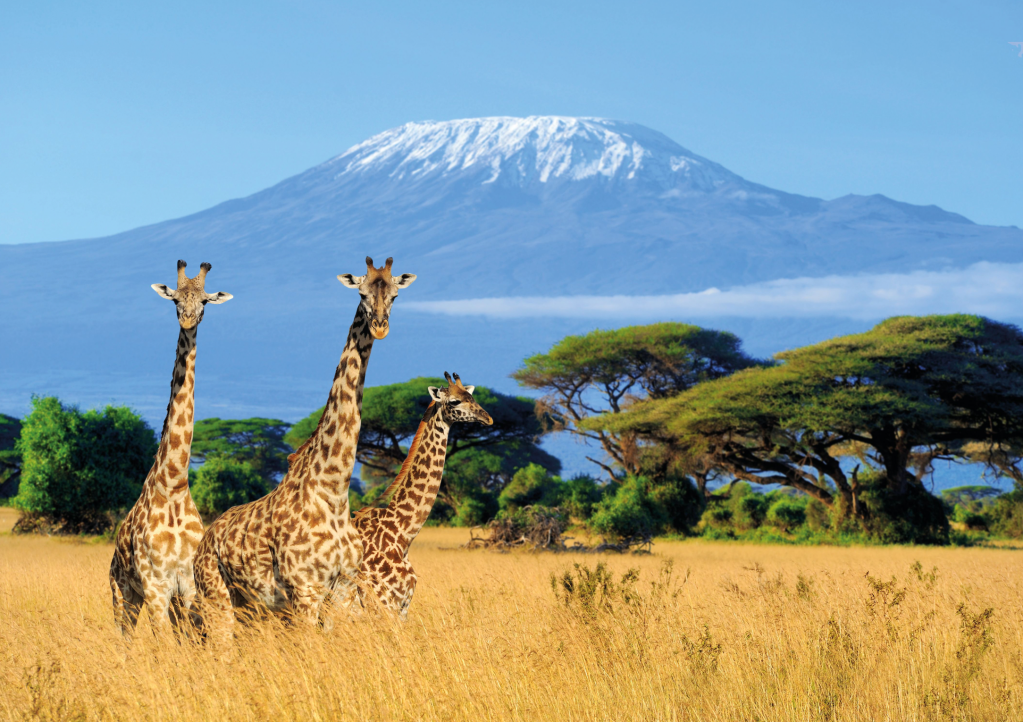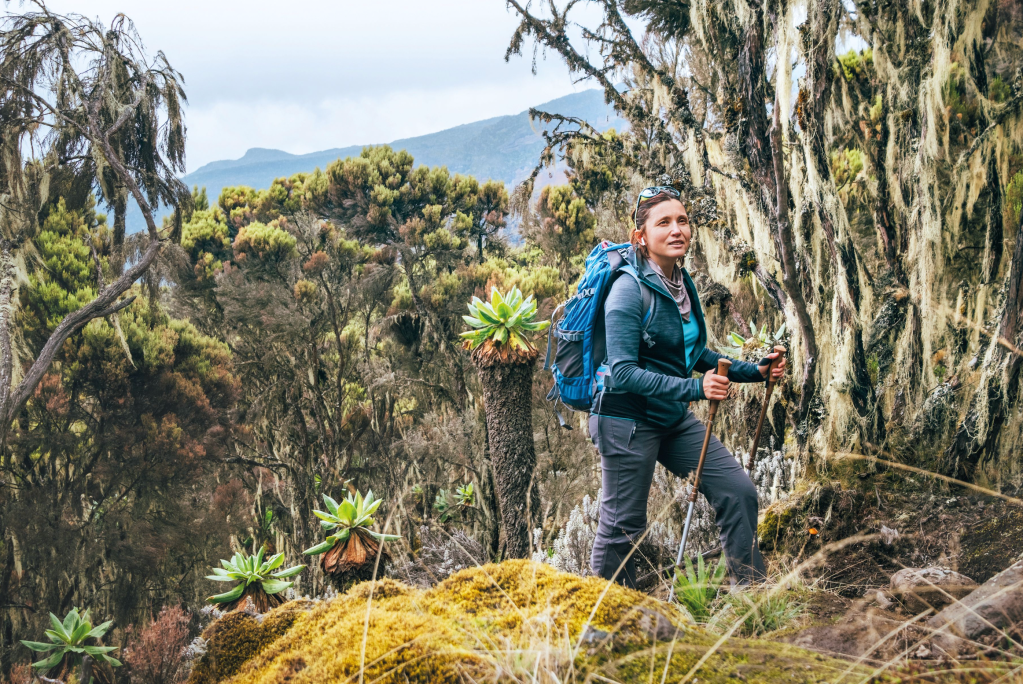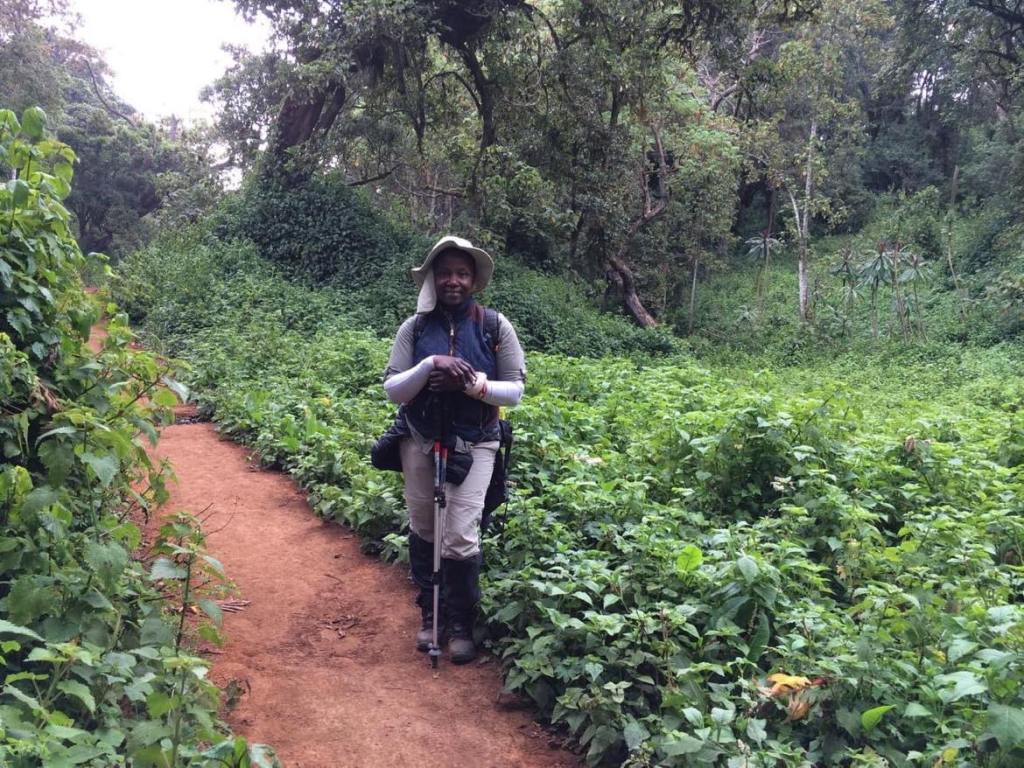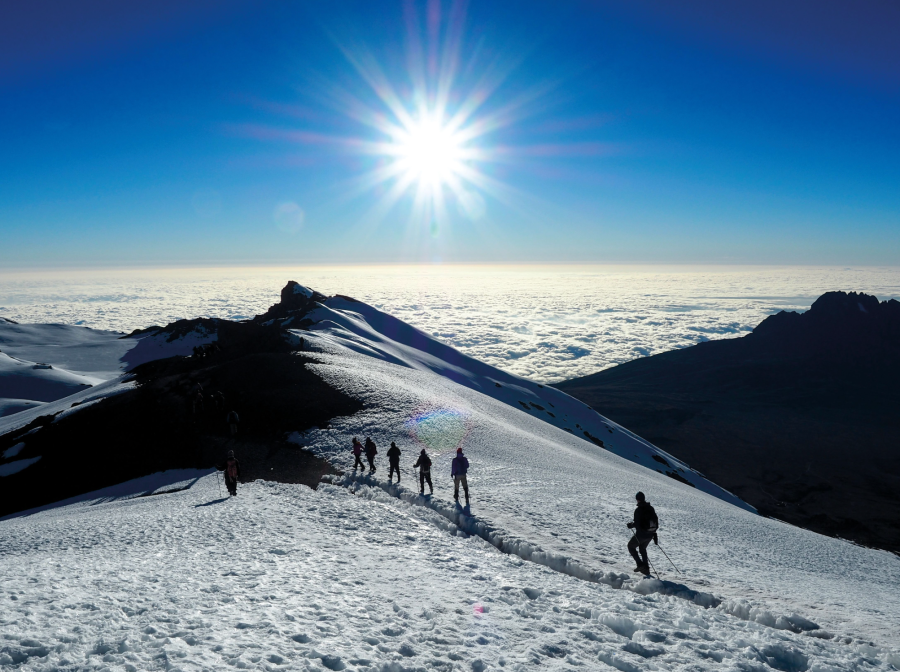Kilimanjaro – via the popular Machame Route – might be the ‘easiest’ of the Seven Summits to climb but is not a challenge to be underestimated or a trek to be dismissed.
Kilimanjaro is often flagged as the easiest of the Seven Summits (the highest peaks on each continent). When it comes to the world’s tallest mountains, though, ‘easy’ is a relative term. It might be diminutive in comparison with Everest. At 5,895 metres it’s head and shoulders above three other peaks in the Seven Summits group. But Kili – even by the popular Machame route – is a test of both altitude resilience and endurance, and only 45-60% of trekkers make it to the summit. In other words: don’t underestimate the challenge.
From afar, Africa’s highest is one of the most recognisable peaks in the world. It hovers into view across the flat, game-roamed wilds of Tanzania’s Kilimanjaro National Park, its snow-streaked volcanic cone often rising above a skirt of thin cloud. At certain times of year, the full moon appears to balance on the mountain’s summit. Perhaps that’s why second-century sailors described it to Egyptian astronomer Ptolemy as Africa’s ‘moon mountain’.
Kilimanjaro’s Machame Route: the stats
Start: Machame Gate | End: Mweka Gate | Length: 62km / 37 miles | Ascent: 4,157m | Difficulty: Medium / high
The journey
As well as visual splendour, Kilimanjaro has several significant claims to a place on any amateur mountaineer’s bucket list. It’s the highest free-standing mountain in the world – hence the dramatic way it strikes the eye across the Tanzanian plains. Barring the rarely-climbed Breach Wall Direct route, pioneered by Reinhold Messner and Konrad Renzler in 1978, there are no technical difficulties on any of the seven routes to the top. The only real barriers standing between you and summit success are fitness and altitude.
“The major unknown, which is largely out of your control, is altitude sickness,” says Ben Tubb, who summited Kili in 2012 via the popular Machame route. “The fittest often seem to fair the worst and after we descended our guide revealed he was suffering on the ascent and was considering calling it off!”
Despite the uncertainty around altitude, around 50,000 people attempt to climb Kili every year. Ben’s account of the incredible ascent reveals why.

The Roof of Africa and the plains below are akin to two different worlds. Credit: Shutterstock
“As you climb, you move from rainforest at the base of the mountain to moorland studded with alien plant species such as giant lobelias followed by barren alpine desert and finally the ‘artic zone’ of the summit with the remnants of a diminishing glacier. The summit was obviously the highlight. When the sun emerged on the horizon and illuminated the enormous caldera, we fully appreciated what an amazing place we’d come to.”
Kili’s popularity is good news for the local economy – the mountain generates thousands of jobs for guides, porters, cooks and more. But popularity can sometimes be a double-edged sword. The latest conservation outlook report from the International Union for Conservation of Nature (IUCN) describes tourism pressures as “high and increasing, creating associated problems with litter, waste management and trampling of vegetation.”
Barring the obvious (don’t drop litter, stick to the path, pack a trowel), the best way to avoid contributing to these problems is to choose a responsible tour operator. The Kilimanjaro Porters Assistance Project (KPAP) list of approved operators is a good place to start.

On the Umbwe route in the forest to Kilimanjaro mountain. Credit: Shutterstock
Kilimanjaro: the alternative routes
Another option for anyone hoping to leave a lighter trace while avoiding the worst of the crowds is to attempt Kili by a less popular route. Machame is beautiful but busy, Marangu gets plenty of attention as the only route where climbers can stay in mountain huts; but longer Lemosho winds through rainforest bursting with wildlife, and scrambly, rarely-trodden Umbwe is worth considering if you’re an experienced trekker and you think you could handle the climb with less time to acclimatise.
Gondai Moyo-Kanyemba on his trek of Kilimanjaro via the Machame Route
Gondai Moyo-Kanyemba summited Kili in 2019 via the Lemosho Route aged 54 years old. He told The Great Outdoors, “Nothing is easy without adequate oxygen – the air is incredibly thin and it gets thinner with every step up the mountain, so I found myself wanting to pause for a second or more after each step.” He added: “Big thumbs up to my guide, Shalali Bernard, who, after noticing the situation, grabbed my backpack and carried it all the way to the peak.”
“Climbing through the night above 5,000m was one of the most physically demanding things I have ever endured. Even for the fittest, the effects of altitude can make the climb very tough. The combined effects of cold, altitude, fatigue, sleeplessness, the dark and physical exertion made this final day an exercise in mental toughness. However, I do believe that, with the right support, a conservative itinerary and a ‘can do’ attitude, climbing Kili is within most people’s capabilities.

“To those who intend to take on this mountain, the most challenging day or your climb, regardless of which route you take, would be summit day, where most people trek between 14 and 18 hours. The descent is cruel on the knees and you will appreciate walking poles. There is no way to describe or imagine the experience of climbing to nearly 6,000m altitude. My advice is to take all the time you need and don’t let anyone pressure you into moving faster than you feel comfortable with. Climbing Kili isn’t a race. Steady, steady (pole, pole in Swahili), one tiny little step after the other, sipping water from time to time. Other groups overtaking you? Let them pass! What matters is to reach the Roof of Africa and back safely.”
If you want to explore other international treks of a lifetime, check out these other bucket list treks and our expert advice on how to hike them – as well as their lesser trodden alternatives.







